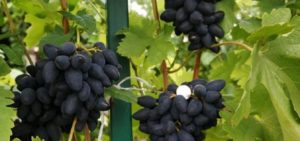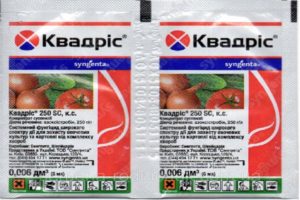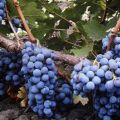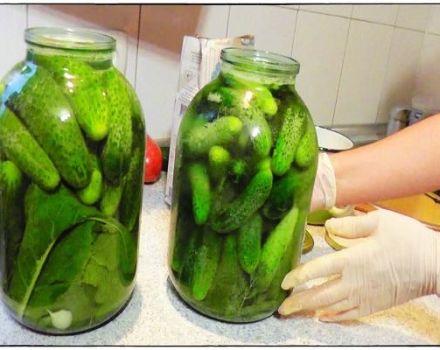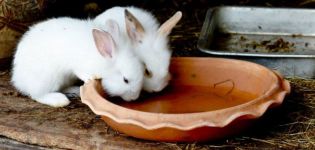Description and history of breeding Riesling grapes, the rules for its cultivation
Riesling grapes are a valuable berry that is a storehouse of vitamins and microelements. The variety is also called the "king of the vineyards". Moreover, the grape species is an irreplaceable product in the production of high-quality wine drinks. The resulting wine has an exquisite taste, aroma and is considered an elite drink. Therefore, when choosing the best grapes for cultivation for production purposes, it is worth paying attention to the Riesling variety.
Features of the variety
Riesling is considered a technical grape. Berries are used for the production of wine drinks and juices. According to the morphological characteristics of berries, biological characteristics, shrubs belong to the Western European group of grape varieties. Moreover, the plant itself is unpretentious in care and can grow even in cool regions.
Breeding history
The historical homeland of the plant is the Rhine Valley, where culture was first mentioned in the 15th century. Presumably, the plant was cultivated from a wild vine and an already cultivated species.
In 1435, Count Katzenelnbogen began growing grapes on the castle grounds, placing grape seedlings along the southern wall.
Since that time, the grape species has gained recognition throughout the world. Today culture is widespread everywhere. This variety is cultivated both in Austria and Germany, as well as in Bulgaria, Switzerland, Hungary, and the USA. In Germany, about 60% of all grapes are Riesling.
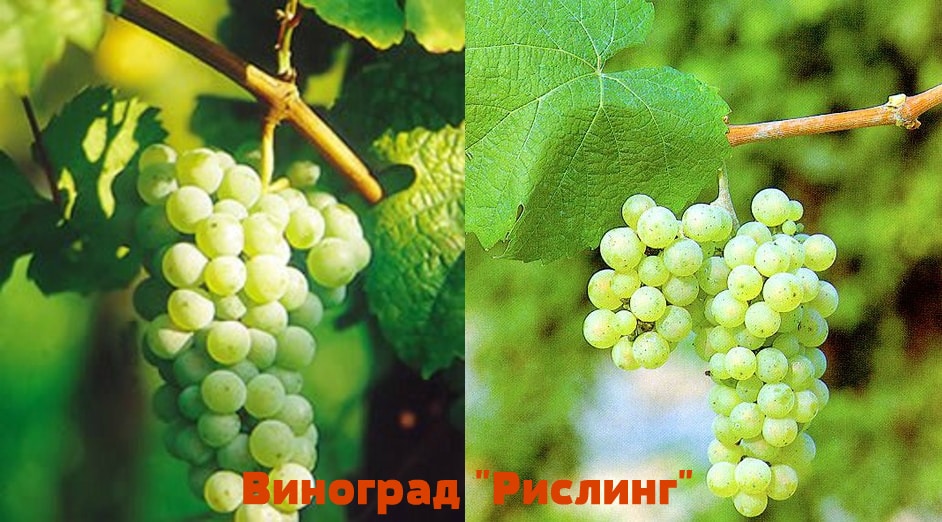
Specifications
The popular white grape variety used for the production of wine drinks has a number of characteristics and differs from others in technical characteristics. Therefore, before growing a culture, you need to consider in detail the description of the species. The crop is kept fresh for a long time. And the wines remain delicious even after 4 centuries.
Bush
The grape shrubs themselves are considered vigorous, differ in semi-spreading shoots. At the same time, the shrub stands out with a high level of vine ripening.

Leaves and shoots
The leaves of the plant have several characteristics:
- leaves are rounded, with 3 or 5 lobes;
- leaf dissection depth - medium;
- surface - coarse;
- young leaves of bronze color. Mature foliage - rich green, in autumn - yellow;
- the leaves are rough to the touch, with veins below;
- the lower part of the leaf is slightly omitted.
The young vine has a light brown hue, saturated at the nodes.Shoots, which are just beginning to ripen, are covered with a small light green downy and covered with pink teeth. The axial, petiolate part is reddish.

Flowers
The flowers of the culture are bisexual, which simplifies the process of pollination of the culture.
Berries
Grape berries also have a number of differences:
- Small to medium-sized clusters can reach lengths from 8 to 16 centimeters.
- The mass of one twig with berries, on average, is 100 grams.
- The stem of the bunch is 3-5 centimeters.
- The berries themselves are small in size, with a strong and thin shell.
- The color of the berries is white-green. In this case, the fruits are covered with a yellowish bloom.
- Berries also differ in a pleasant and harmonious taste.
- The variety may differ in peas.
- The shedding rate of flowers and fruits is high.
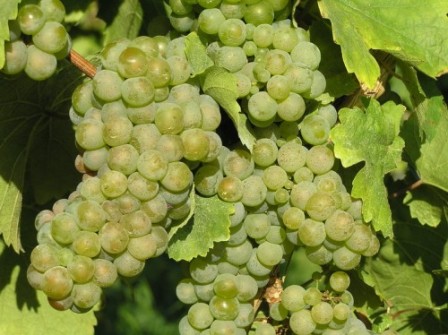
Sugar in berries contains 17-18 percent. The acidity of the grapes is 1 percent. Therefore, the variety is ideal for the production of unsweetened white wine drinks.
Ripening terms
In the absence of strong temperature changes, grapes ripen in 165-170 days. And already at the end of September, you can enjoy the first harvest.
Productivity and winter hardiness
The fertility rate of the culture is 87-90 percent. On average, two brushes are formed on one shoot. You should not strive to increase the yield, as the quality of the berries will decrease. In this case, the yield can reach 157 centners per hectare.
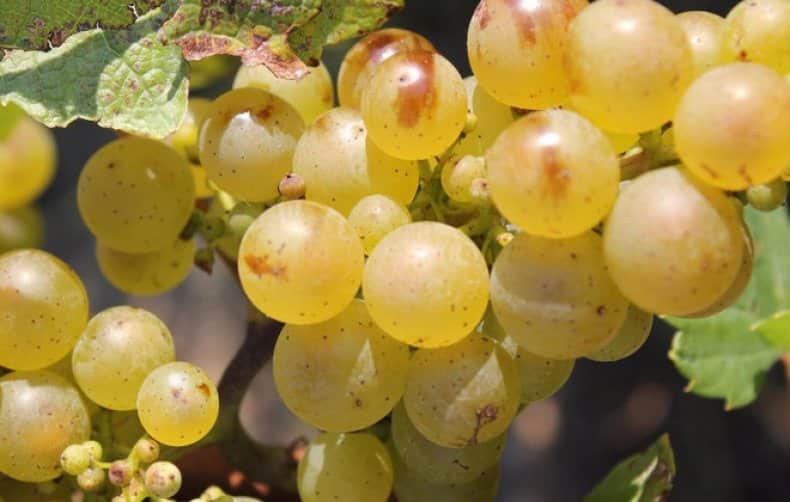
The plant has a high level of frost resistance. Ovaries are formed late, thanks to which the culture easily tolerates spring frosts.
The nuances of growing
Riesling is an easy-to-grow and low-maintenance crop. The grape variety differs in that it does not require a huge amount of heat and sunlight for growth. In addition, growing shrubs in regions with constant high temperatures, the berries ripen faster, but do not have a rich taste and aroma and are not suitable for winemaking.
In cool climates, the berries ripen slowly, but this temperature regime has a positive effect on the quality of the crop. The berries begin to ripen at the end of September, and are suitable for harvesting not earlier than November.

Landing rules
When growing shrubs, you need to consider the following features:
- It is important to properly prepare a hole for planting. The seat diameter must be at least 60 centimeters. The depth of the hole should correspond to the size of the seedling roots.
- It is important to choose the right site when planting. A sloping slope with clay soil would be ideal.
- It is possible to grow bushes with a shelter, which is a non-standard formation on four sleeves. The length of the structure should be 40-60 centimeters. You can also grow a culture without shelter, on higher boles, up to 1.2 meters long. In this case, make a formation on a two-armed cordon and six fruit arrows.
- When growing in a standard-free way, provide a plant with a load of 30 shoots.
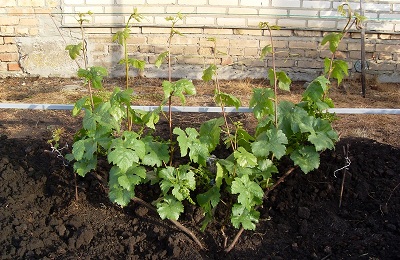
The landing itself is carried out in the following way:
- A ten-centimeter layer of fertilized soil is placed in the prepared hole.
- Having spread the rhizomes, the seedlings are placed in the prepared soil.
- The pit is half filled with fertilized soil.
- The landing site is then filled with warm water.
- After waiting for the soil to dry, fill the hole with soil to the end.
- Water the plant twice: after 2 weeks and after a month from planting. If the weather is rainy, you can not water the seedlings.
Saplings, rooted in spring, give a harvest in the second year. When planted in autumn, the plant will bear fruit in the third season.
Requirements for soil composition
For the cultivation of grapes, not too fertile lands of a calcareous composition are suitable.

Care
Standard grape bushes care activities include: watering, pruning, fertilizing, weed and pest control.
Watering
Watering is required for young seedlings up to two years old. At the same time, soil moistening is not carried out during the flowering period of the culture and the intensive growth of shoots. The number of waterings should be no more than 4 times a season.
Fertilizer
When planting seedlings, it is imperative to feed the plant with mineral fertilizers suitable for this variety. Such feeding will be enough for shrubs to bear fruit for 2-3 years. After the lapse of time, it is necessary to fertilize the worn out soil again.

Pruning
Every spring, prune strong young branches, cutting off several buds. Thus, they provide the correct load on the shoots of the plant and give the vine a shape convenient for wintering. The seedlings of the first year are not cut.
Repeat pruning and shaping of shrubs for 3-6 years until the bush acquires its optimal shape. Then cut off dry and non-fruiting branches.
Soil loosening
In the summer, loosen the soil, in the spring and autumn - deep digging. Do I need to cover the grapes for the winter. A frost-resistant plant can survive even the most severe winter if the planting was carried out according to all the rules.
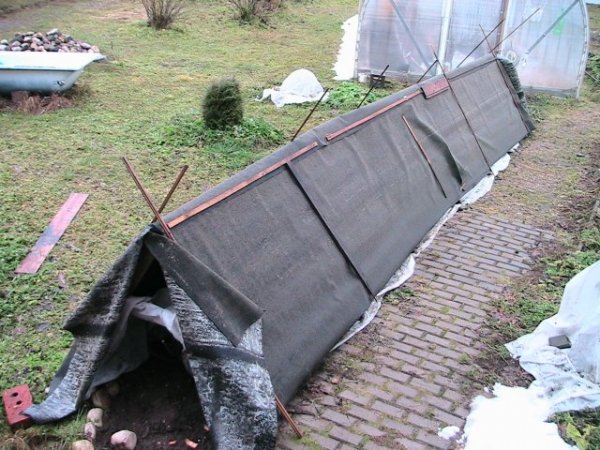
Prevention and control of pests and diseases
The plant has poor resistance to a number of diseases:
- Susceptible to bacterial cancer.
- Possible infection of the plant with powdery mildew and gray rot.
- The degree of mildew infection is small.
- The berries are affected by mold.
The bush is not resistant to pests - phylloxera and grape leafworm. The plant is also attacked by ticks and grape thrips.
To protect shrubs from pests and diseases, preventive measures are taken:
- Fertilizing the soil.
- Pruning and watering.
- Special events:
- spraying with fungicides;
- watering horses with Fundazole solution.
